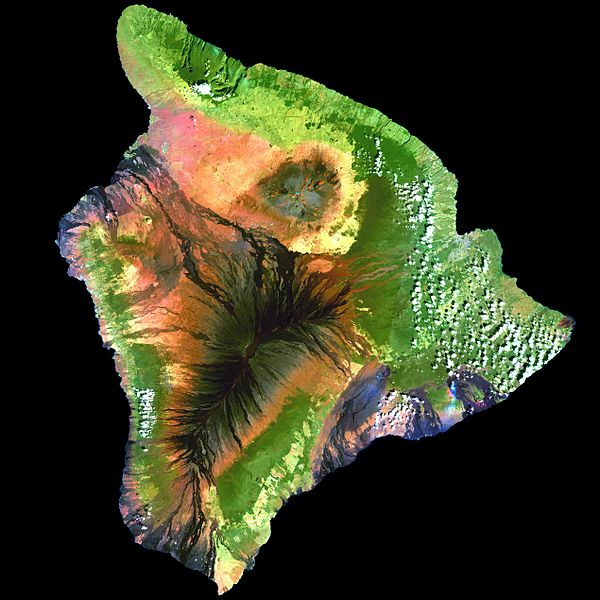ملف:Island of Hawai'i - Landsat mosaic.jpg
المظهر

حجم هذه المعاينة: 600 × 600 بكسل. الأبعاد الأخرى: 240 × 240 بكسل | 480 × 480 بكسل | 768 × 768 بكسل | 1٬024 × 1٬024 بكسل | 2٬048 × 2٬048 بكسل | 5٬076 × 5٬076 بكسل.
الملف الأصلي (5٬076 × 5٬076 بكسل حجم الملف: 5٫19 ميجابايت، نوع MIME: image/jpeg)
تاريخ الملف
اضغط على زمن/تاريخ لرؤية الملف كما بدا في هذا الزمن.
| زمن/تاريخ | صورة مصغرة | الأبعاد | مستخدم | تعليق | |
|---|---|---|---|---|---|
| حالي | 11:59، 1 سبتمبر 2009 |  | 5٬076 × 5٬076 (5٫19 ميجابايت) | Túrelio | saved with 95% quality (low compression), but without "progressive" option |
| 11:59، 1 سبتمبر 2009 |  | 5٬076 × 5٬076 (4٫9 ميجابايت) | Bidgee | Fix thumbnail generation issue caused by progressive loading. | |
| 11:31، 1 سبتمبر 2009 |  | 5٬076 × 5٬076 (4٫91 ميجابايت) | Rocket000 | reuploading | |
| 11:52، 27 ديسمبر 2007 |  | 5٬076 × 5٬076 (4٫91 ميجابايت) | Avenue | {{Information| |Description=This simulated true-color image of the island of Hawai'i was derived from data gathered by the Enhanced Thematic Mapper plus (ETM+) on the Landsat 7 satellite between 1999 and 2001. |Source=[http://veimages.gsfc.nasa.gov/2712/l |
استخدام الملف
الصفحة التالية تستخدم هذا الملف:
الاستخدام العالمي للملف
الويكيات الأخرى التالية تستخدم هذا الملف:
- الاستخدام في af.wikipedia.org
- الاستخدام في ast.wikipedia.org
- الاستخدام في az.wikipedia.org
- الاستخدام في be.wikipedia.org
- الاستخدام في bn.wikipedia.org
- الاستخدام في br.wikipedia.org
- الاستخدام في ca.wikipedia.org
- الاستخدام في ceb.wikipedia.org
- الاستخدام في cy.wikipedia.org
- الاستخدام في de.wikipedia.org
- الاستخدام في de.wikivoyage.org
- الاستخدام في en.wikipedia.org
- Hawaii (island)
- Mauna Loa
- Landsat program
- Geoinformatics
- Puna, Hawaii
- User:Spikebrennan
- Portal:Hawaii/Selected article
- Portal:Hawaii/Selected article/11
- Wikipedia:Featured picture candidates/February-2008
- Wikipedia:Featured picture candidates/Big Island of Hawai'i
- User:Hawaiian Mafia
- User:Aoi/sandbox
- الاستخدام في es.wikipedia.org
- الاستخدام في es.wikibooks.org
- الاستخدام في eu.wikipedia.org
- الاستخدام في fa.wikipedia.org
- الاستخدام في fr.wikipedia.org
- الاستخدام في fr.wikivoyage.org
- الاستخدام في ga.wikipedia.org
- الاستخدام في haw.wikipedia.org
- الاستخدام في he.wikipedia.org
- الاستخدام في hi.wikipedia.org
- الاستخدام في hu.wikipedia.org
- الاستخدام في ia.wikipedia.org
- الاستخدام في id.wikipedia.org
- الاستخدام في incubator.wikimedia.org
- الاستخدام في is.wikipedia.org
- الاستخدام في ja.wikipedia.org
- الاستخدام في jv.wikipedia.org
اعرض المزيد من الاستخدام العام لهذا الملف.

